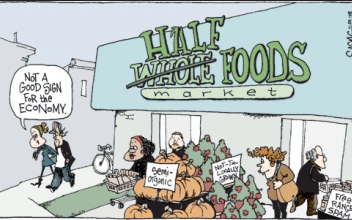Robyn Bolton writes: The news that Whole Foods will open a separate chain of stores designed to appeal to millennials stopped me mid-aisle. According to Whole Foods co-CEO Walter Robb, these future stores will feature “modern, streamlined design, innovative technology, and a curated selection” of lower- priced organic and natural foods.
As millennials would write—facepalm.
By relying on demographics to define a consumer base, executives are implicitly, or explicitly, saying that all people of a certain demographic (in this case the same age cohort) are the same and that they are also distinctly different from everyone in other demographics. This flawed approach applies not just to Whole Foods but to any business.
A better approach is to target and design for consumers based on what my colleagues and I call their “jobs-to-be-done” – the fundamental problems they are trying to solve or goals they are trying to achieve. By understanding consumers’ jobs, companies can identify what drives their behavior and their buying decisions—and then create offerings that resolve their most important and unsatisfied jobs.
Within its existing stores, Whole Foods has demonstrated its ability to successfully design offerings that satisfy a range of functional, emotional, and social jobs.
Certainly, Whole Foods’ concerted effort to solve important jobs that are not currently satisfied by existing stores is laudable. But it’s thrusting the company into a field crowded with other large and established retailers seeking to fulfill the same jobs of urban consumers willing to trade off selection for value and natural/organic foods, including, namely:
- “Give me convenient access to healthy food” – Both Target and Walmart are aggressively working to satisfy this job by rapidly expanding the number of CityTarget, TargetExpress, and Walmart Express stores.
- “Let me feel confident in the choices I’m making” – “Curated selections” are an effective solution for this job, and Whole Foods’ is already delivering brilliantly in its existing stores, with its 365 Everyday Value house brand (which may be the focus of the new chain, if trademark filings are to be believed).
- “Give me good value” + “Enable me to make healthy choices” – Whole Foods is often referred to as “Whole Paycheck” because many perceive its prices to be significantly higher than those of traditional grocers.
Consumers are already visiting an average of 2.5 stores or online venues to solve their many grocery jobs,
Until it resolves the question of differentiation, Whole Fods will likely be forced to answer a far more awkward question, eloquently posed by one millennial: “Why don’t they just call the new chain Trader Joe’s?”

